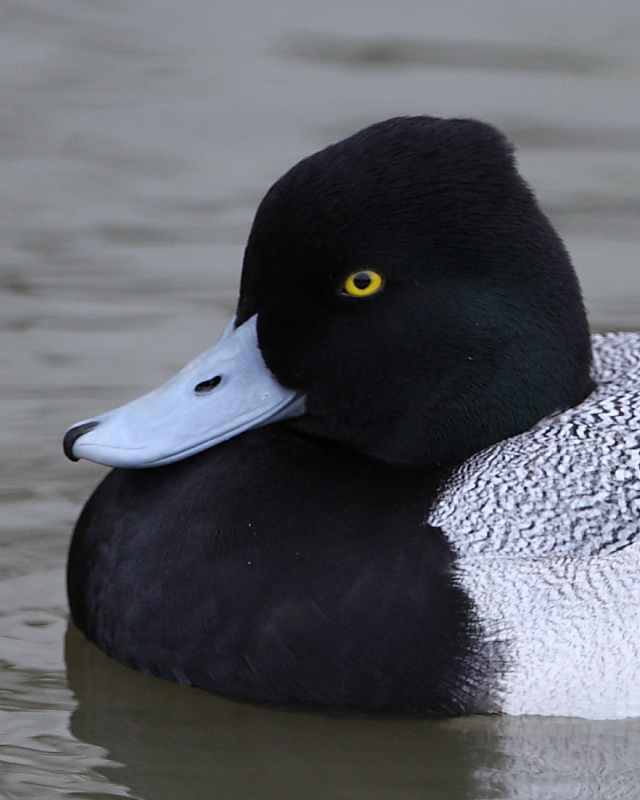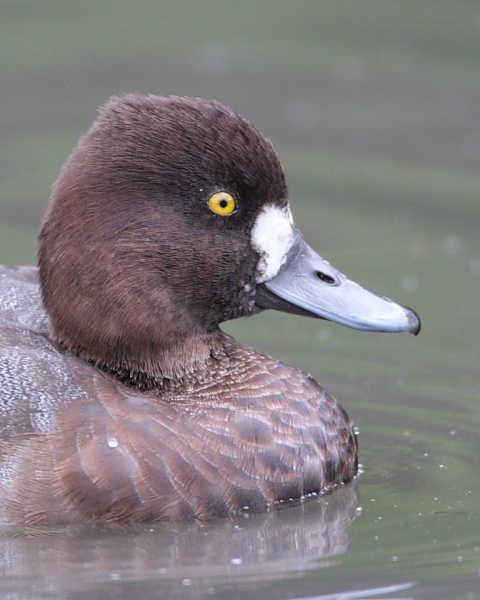Blagdon Lake Birds
Lesser Scaup Aythya affinis (Eyton, 1838)
(Very rare, Nearctic vagrant)

- One, 1st-winter male, 22nd April to 7th May 2000 (N.R. Milbourne, R. Mielcarek et al.).
- One, adult female, 22nd Oct. 2000 (N.R. Milbourne et al.).
- One, adult male, 11th-20th March 2007 (N.R. Milbourne et al.).
- One, adult male, 30th Sep. to 21st Nov. 2007 (N.R. Milbourne et al.).
- One, adult male, 15th-20th March 2008 (N.R. Milbourne et al.).
- One, adult male, 7th Dec. 2012 to 31st Jan. 2013 (N.R. Milbourne, R. Mielcarek et al.).
- One, adult male 9th Nov. 2013 (P. Delve, N.R. Milbourne et al.).
- One, adult male, 29th June to 17th Aug. 2014 (N.R. Milbourne, S. Davies et al.).
- One, adult male, 12th July to 13th Aug. 2015 (N.R. Milbourne et al.).
- One, 1st-winter male, 16th March to 6th May 2019 (N.R. Milbourne, M. Hynam et al.).
The third record relocated to Cheddar Reservoir where the author found it when birding with Roy Curber. This became the first record for Somerset. The fifth record relocated to Barrow Tanks (21st March to 5th April, C.J. Stone et al.) then on to Chew Valley Lake (7th April to 1st May, A.H. Davis, R. Mielcarek et al.) becoming the first records for both sites. The 2012 bird was likely to have been one of two drakes that had previously been seen at Chew Valley Lake during the autumn. Three to five separate birds probably account for all these records but, of course, we can't be certain.
Most field guides (especially American) suggest that the Greater Aythya marila and Lesser Scaups are difficult to distinguish in the field and this may be true with females, to a certain extent, but the drakes are relatively easily separated with experience and reasonable views. More difficult, in my opinion, are distinguishing the genuine article from the plethora of Aythya hybrids that we seem to attract to the Bristol Reservoirs. Lesser Scaup drakes are slightly smaller than Tufted Ducks Aythya fuligula, with which they readily associate, and the key attributes to look for are the white wing stripe that extends across the secondaries and cuts off abruptly at the primaries where it is grey (white extends into about the first six primaries on a Greater Scaup), the narrow black nail on a blue-grey upper mandible (most hybrids have a broad black tip like a Tufted Duck) and coarse black vermiculations on a white mantle (cf. the fine vermiculations of a Greater Scaup and Aythya hybrids that include a Common Pochard Aythya ferina in their parentage). There is a peak at the rear of the head behind the eye, when the bird is relaxed, and a slight indentation caused by a short tuft at the rear of the crown. However, beware of birds that are actively diving which often show rounded head profiles similar to a Greater Scaup.

There has been a lot written in guides about the colour of feather sheen on the head but although this is relatively consistent in Lesser Scaup, it varies greatly in the field, depending on the angle of the sun to viewer and whether or not the feathers are wet. Even the 2nd edition of the Collins Bird Guide states there is "more purple than green sheen on the head", which is true in most circumstances, but doesn't offer much help when faced with a difficult Aythya hybrid. So my advice would be to discount this as a factor when trying to identify a Lesser Scaup, but do note what you see when submitting a description. Females are more difficult to pick out of the crowd, especially on a large reservoir! Structure (bulk and shape) is a key factor to look at when trying to discount a female Greater Scaup, but Aythya hybrids are far more difficult and a potential Lesser Scaup will undoubtedly require a good view of the wing stripe to help clinch identification.

Lesser Scaup breeds across Canada, Alaska and the north-western states of USA in forest tundra, open boreal forest and prairie-parkland regions. They winter south into the Caribbean, Central and South America and have even been recorded in Hawaii. Some of the population winters in the southern states of the USA, usually on or near the coast, though numbers vary from year to year. Several birds were thought to be the first for Britain, including one at Sutton Courtenay, Oxon. in December 1957. After much debate, it was shot under licence in March 1960 and found to be a Tufted Duck x Common Pochard hybrid. The first record for Britain was of a 1st-winter drake at Chasewater from 8th March - 26th April, 1987 (accepted by the BOURC in 1989). Since that time there have been over 165 records to 2012, many of which undoubtedly refer to wandering individuals, but it seems there has been a genuine increase in their appearance on this side of the Atlantic with many identified as 1st-winter birds. However, it is reckoned that there has been a steady decline in the population in America to around 3 million birds a couple of years ago compared with twice that number in the 1970s.
Bibliography (sources of information):
- British Birds Rarities Committee (BBRC) Website
- Davis, A.H. (ed.) Avon Bird Report, 2000. Avon Ornithological Group.
- Holian, J.J. & Fortey, J. Lesser Scaup: new to the Western Palearctic. Brit. Birds 85: 370-376, Jul. 1992.
- Hudson, N. & the Rarities Committee. (2013). Report on rare birds in Great Britain in 2012. Brit. Birds 106: 570-641, Oct. 2013.
- Kear, J. (ed). 2005. Bird Families of the World. Ducks, Geese and Swans. Vol. 1. Oxford University Press.
- Milbourne, N.R. Species New to the Avon Area: Lesser Scaup at Blagdon Lake in April. Avon Bird Report, 2000. Avon Ornithological Group.
- Perrins, C. The "Lesser Scaup" Problem. Brit. Birds 54: 49-54, Feb. 1961.
- Rodgers, M.J. Report on Rare Birds in Great Britain in 2000. Brit. Birds 94:10, 452-504, Oct. 2013.
- Rose, Dr H.E. (ed.). Avon Bird Report, 2007. Avon Ornithological Group.
- Rose, Dr H.E. (ed.). Avon Bird Report, 2008. Avon Ornithological Group.
- Rose, Dr H.E. (ed.). Avon Bird Report, 2013. Avon Ornithological Group.